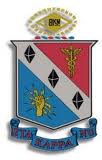| Line 1: | Line 1: | ||
| − | <div style="font-family: Verdana, sans-serif; font-size: 14px; text-align: | + | <div style="font-family: Verdana, sans-serif; font-size: 14px; text-align: center; width: 70%; margin: auto; border: 1px solid #aaa; padding: 1em; text-align:center;"> |
{| | {| | ||
|- | |- | ||
| − | |''' | + | | |
| − | | [[Image: | + | '''This [[Collective Table of Formulas|Collective table of formulas]] is proudly sponsored'''<br> '''by the [http://www.facebook.com/hkn.beta Nice Guys of Eta Kappa Nu].''' <br><br> Visit us at the HKN Lounge in EE24 for hot coffee and fresh bagels only $1 each! |
| − | + | ||
| + | | [[Image:HKNlogo.jpg]] | ||
|} | |} | ||
| − | </div> | + | </div> |
{| | {| | ||
Revision as of 06:25, 5 April 2012
|
This Collective table of formulas is proudly sponsored |

|
| Probability Formulas | |
|---|---|
| Properties of Probability Functions | |
| The complement of an event A (i.e. the event A not occurring) | $ \,P(A^c) = 1 - P(A)\, $ |
| The intersection of two independent events A and B | $ \,P(A \mbox{ and }B) = P(A \cap B) = P(A) P(B)\, $ |
| The union of two events A and B (i.e. either A or B occurring) | $ \,P(A \mbox{ or } B) = P(A) + P(B) - P(A \mbox{ and } B)\, $ |
| The union of two mutually exclusive events A and B | $ \,P(A \mbox{ or } B) = P(A \cup B)= P(A) + P(B)\, $ |
| Event A occurs given that event B has occurred | $ \,P(A \mid B) = \frac{P(A \cap B)}{P(B)}\, $ |
| Total Probability Law | $ \,P(B) = P(B|A_1)P(A_1) + \dots + P(B|A_n)P(A_n)\, $
$ \mbox{ where } \{A_1,\dots,A_n\} \mbox{ is a partition of sample space } S, B \mbox{ is an event }. $
|
| Bayes Theorem | $ \,P(A_j|B) = \frac{P(B|A_j)P(A_j)}{\sum_{i=1}^{n}P(B|A_i)P(A_i)},\ \{A_i\} \mbox{ and } B \mbox{ are as above }. $ |
| Expectation and Variance of Random Variables | |
| Binomial random variable with parameters n and p | $ \,E[X] = np,\ \ Var(X) = np(1-p)\, $ |
| Poisson random variable with parameter $ \lambda $ | $ \,E[X] = \lambda,\ \ Var(X) = \lambda\, $ |
| Geometric random variable with parameter p | $ \,E[X] = \frac{1}{p},\ \ Var(X) = \frac{1-p}{p^2}\, $ |
| Uniform random variable over (a,b) | $ \,E[X] = \frac{a+b}{2},\ \ Var(X) = \frac{(b-a)^2}{12}\, $ |
| Gaussian random variable with parameter $ \mu \mbox{ and } \sigma^2 $ | $ \,E[X] = \mu,\ \ Var(X) = \sigma^2\, $ |
| Exponential random variable with parameter $ \lambda $ | $ \,E[X] = \frac{1}{\lambda},\ \ Var(X) = \frac{1}{\lambda^2}\, $ |

